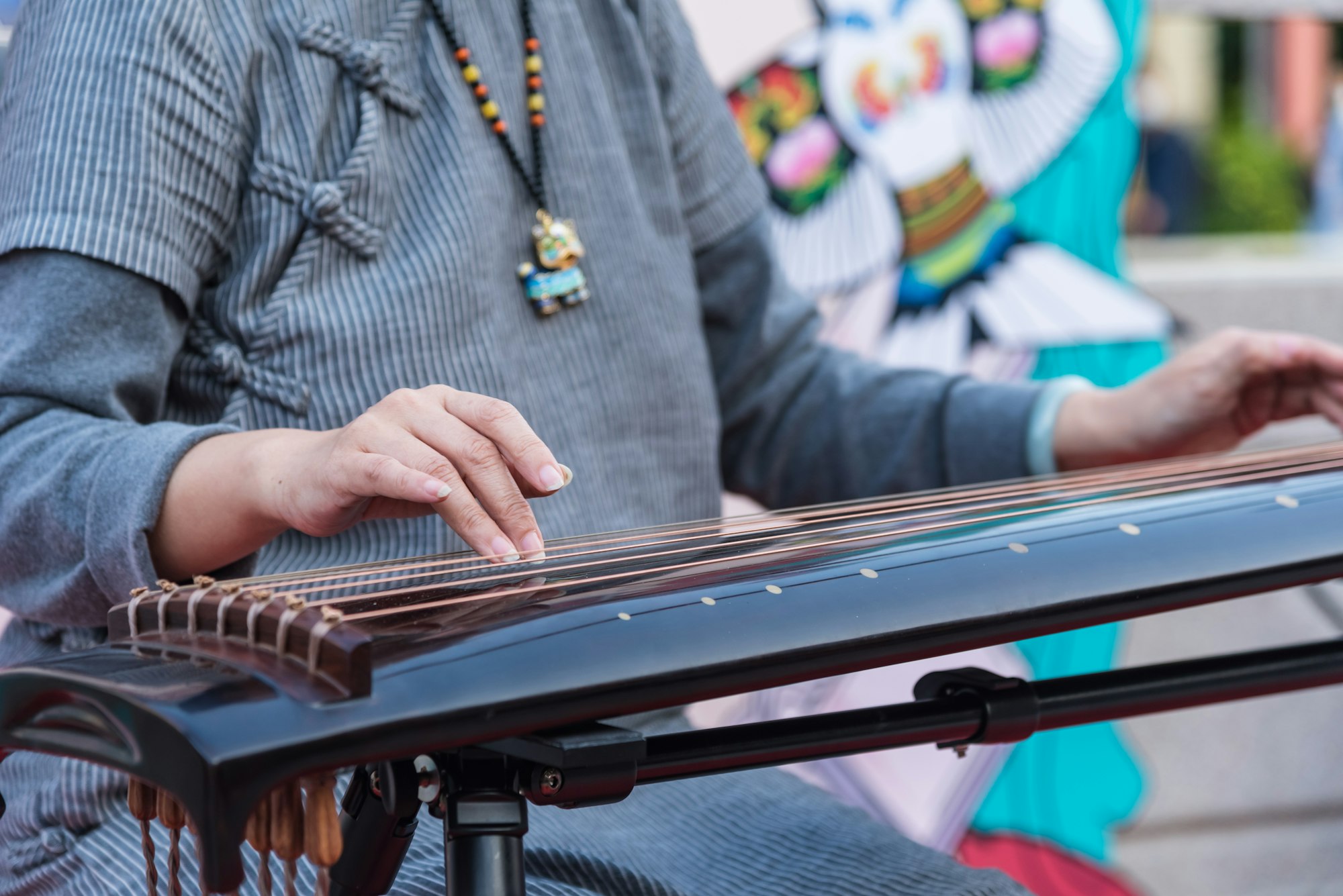Guqin Coda: TLDRs & Links

I had a fun musical journey these past two weeks (in between holiday celebrations, and so so so much food). I am documenting some of my learnings, musings, and inventions here so I have a place to come back and refer when I pick up the instrument again (hopefully soon!). Maybe others would find these posts useful. If so, drop me a note.
Here's a a TLDR and some reference links for this series. Enjoy!
Guqin Series Intro – A brief overview of the different posts.
Part 1: Harmonics and Hui Positions – Harmonics, or Fàn Yīn 泛音, dictate where the 13 Hui positions are. Specifically, the 2nd harmonic (open string + one octave or P8), the 3rd harmonic (open string + one octave + perfect fifth or P5), the 4th harmonic (open string + P8 + another P8), 5th harmonic (open string + P8 + P8 + major 3rd or M3), 6th harmonic (open string + P8 + P8 + P5), 8th harmonic (open string + P8 + P8 + P8). 7th harmonic gets snubbed, and even two positions in the 8th harmonic gets snubbed as well. Anything beyond the 8th harmonic does not get a hui position, but that's ok. As long as we know where to play, we can still play those hidden harmonics.
References:
- Desmos Page showing how the Harmonic Waves maps to hui positions. Click the folder icon to toggle visibility of different harmonics.
- Another blog post on Qin Harmonics
Part 2: Open & Pressed Notes – We can determine where to press down a noteUsing the 13 hui positions, I look into how to determine exactly where to press to get a desired open string (Sàn Yīn 散音) or pressed note (Àn Yīn 按音). I rabbit hole a bit into which intonation system to use (Equal v. Just). I ended up picking the Just Intonation system for reasons, which gives me precise pitch on each note in the chromatic scale. By using more math, I can figure out precise where to press for a given note. Mapping that to the Hui positions, give me what I need for Guqin Tablature.
References:
- Desmos Page showing the pressed positions of chromatic and major scale. Open the Pressed Positions folder, the first line there has instructions on how to toggle between chromatic & major scale, as well as different temperaments.
- Note Visualization Excel sheet to show different pressed positions across the 7 strings for any given note. Cells in Blue are the ones we can edit to adjust our tuning and note to visualize in green.
Part 3: Tablature Old and New – The current system of Guqin tablature is called Jianzipu. Specialized characters denotes which string to play, where to press down, how to pluck, etc. I have a few problems with this system, but the biggest one is I literally cannot write in it on a computer. There's no (free) input system I can use since the characters are not actually Chinese. I started working on a new tabs system based on Hui numbers and string lines, straightforwardly named Numbers on Lines Tabs (or NLTabs for short). This is based largely on modern guitar tablature concepts. In this post, I explain how I translate some of the playing techniques into this system. I also give an example of one of my favorite pieces using NLTabs.
I am not a professional Guqin player, or even a professional musician. I am simply working to solve problems I have in the Guqin tablature, problems that others might share and find these posts useful. Also, I wanted a place to document Guqin playing techniques so I can refer to later.
References
- NLTabs Glossary of Playing Techniques and their Jianzipu counterpart
- NLTabs Template I use for other projects, using LilyPond to engrave the music and tabs
- Score of Plane Leaves Whirl in Fall Breeze (梧叶舞秋风) using NLTabs (also in LilyPond)
- PeiYouQin's website has a fairly comprehensive list of playing techniques
- Blog post on the pros of existing Guqin tablature (Jianzipu)
- Blog post on the cons of existing Guqin tablature (Jianzipu). It appears these last two blog posts are a translation on whether we should reform Jianzipu. I think the essays are published in Chinese academic journals though, which it doesn't seem like I have access to (or have the skill level to read), alas.
Coda: TLDR & links – This thing right now! A summary of different parts in this series and reference links.
Other parts in the Guqin series:
Intro | Part 1 | Part 2| Part 3 | Part 4 | Coda (TLDR & links)